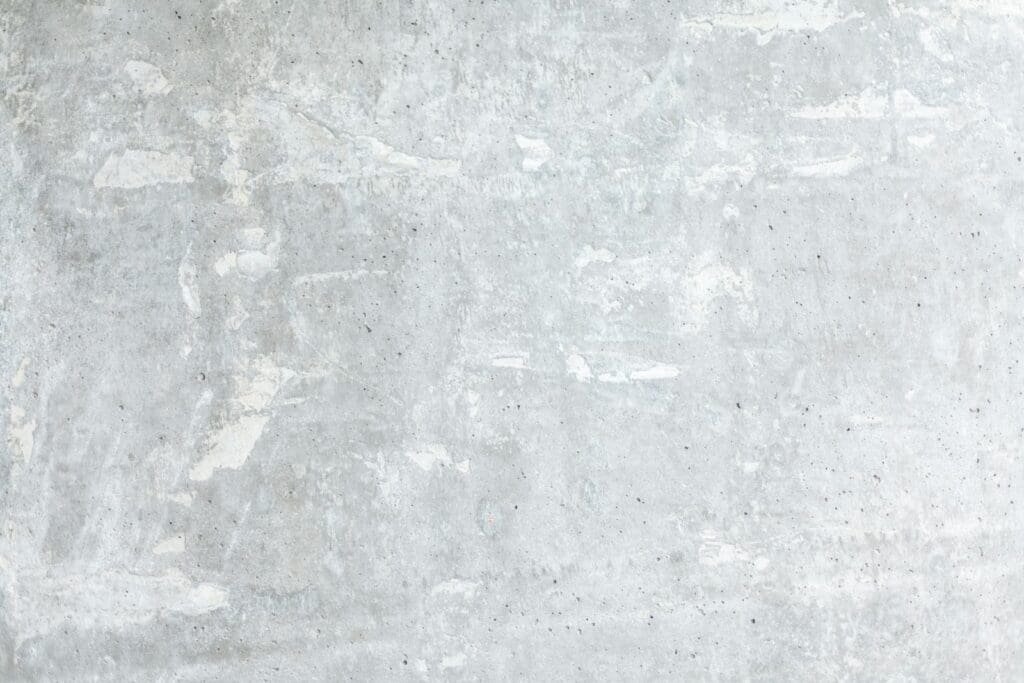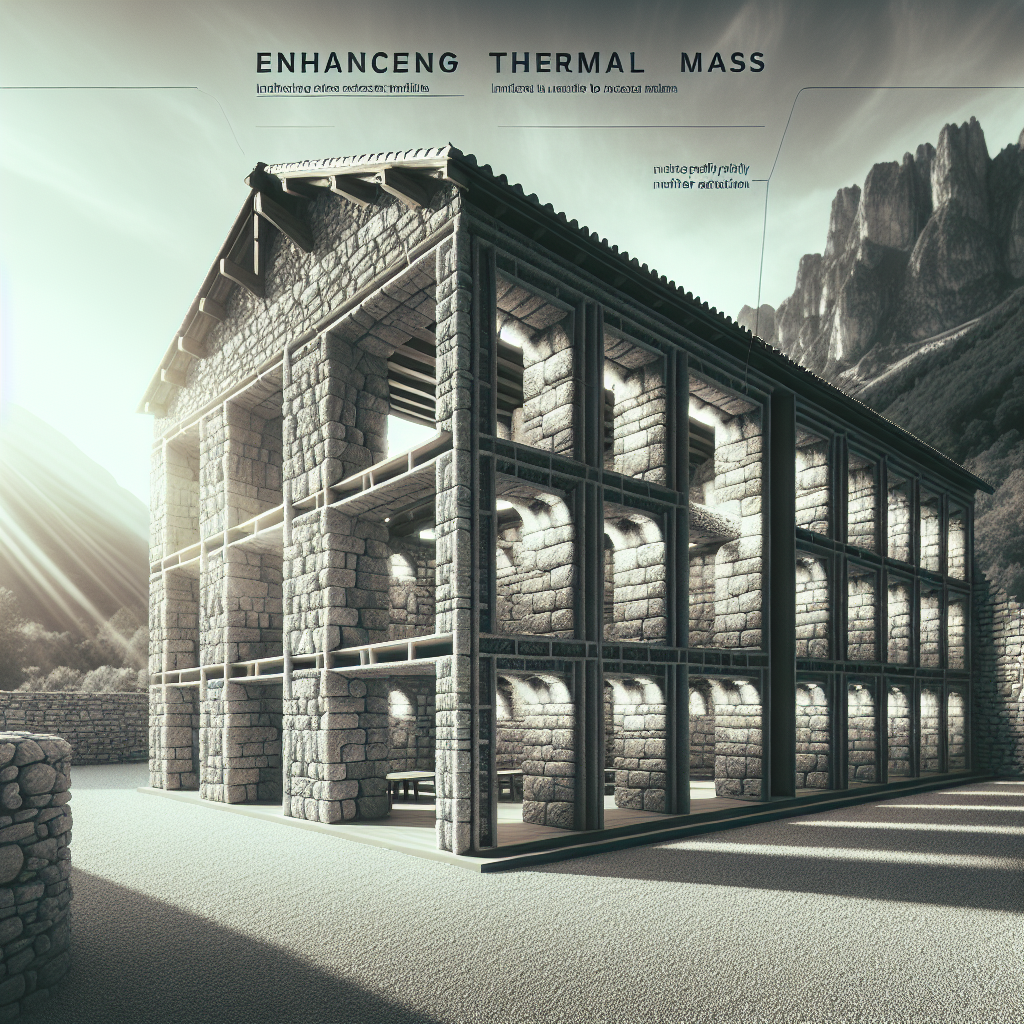Intro To the Concept Of Thermal Mass
Did you know that buildings account for nearly 40% of global energy consumption?
One way to curb this is through effective use of thermal mass materials like concrete.
In this blog post, we’ll explore the fascinating world of concrete walls and how they act as thermal storage units.
We’ll start with the basic concept of thermal mass and why it’s important for energy efficiency and comfort. Then, we’ll explain how concrete’s properties allow it to absorb and release heat, breaking down the mechanics behind this process.
Moving forward, we’ll discuss practical applications in building design—covering topics like building orientation, insulation, and ventilation. Lastly, we’ll look into enhancing concrete’s thermal mass through additives and smart design techniques.
By the end of this article, you’ll have a solid understanding of not only how concrete can regulate indoor temperatures but also how to optimize its thermal properties for a more sustainable future.
Table of Contents
Understanding the Thermal Mass of Concrete Walls

Basics of Thermal Mass
Thermal mass refers to the ability of a material to absorb, store and release heat. In the context of construction, high thermal mass materials like concrete can regulate indoor temperatures by storing heat during the day and releasing it at night.
Why Thermal Mass Matters
- Energy Efficiency: By stabilizing indoor temperatures, thermal mass reduces the need for heating and cooling.
- Comfort: It helps maintain a more consistent indoor climate, reducing temperature fluctuations.
- Sustainability: Lower energy consumption translates to reduced greenhouse gas emissions.
How Concrete Works as Thermal Mass
Concrete’s density and specific heat capacity make it an effective thermal mass material. When used in walls and floors, concrete can absorb heat in warm conditions and release it when the temperature drops.
Heat Absorption and Release
- Absorption: During the day, concrete walls absorb solar heat, keeping the interior cooler.
- Release: At night, the stored heat is slowly released, warming the indoor space.
Thermal Mass Properties of Concrete
| Property | Value |
|---|---|
| Density | 2,400 kg/m³ |
| Specific Heat Capacity | 0.84 kJ/kg·K |
Applications in Building Design
Effective integration of concrete’s thermal mass can enhance a building’s comfort and efficiency. Here’s how:
Building Orientation
Orienting the building to maximize sun exposure on concrete walls can optimize heat absorption. Windows on the south-facing side can help direct sunlight onto these walls.
Insulation
Proper insulation is important to prevent heat from escaping. Insulating the outer sides of concrete walls ensures the captured heat is used effectively within the building.
Ventilation
Using natural ventilation systems can aid in the distribution of the heat stored in concrete walls. Automated systems can regulate airflow to either retain or release heat as needed.
For more technical detail on understanding how concrete’s thermal mass impacts energy efficiency, check out Energy.gov.
How to Enhance the Thermal Mass of Concrete Walls

Material Additives to Improve Thermal Mass
Utilizing material additives can enhance the thermal storage capacity of concrete.
- Phase Change Materials (PCMs): Including PCMs, such as paraffin or salt hydrates, can significantly boost the thermal mass of concrete. These substances absorb and release a substantial amount of heat during phase transitions (e.g., from solid to liquid).
- High Specific Heat Aggregates: Incorporate aggregates with high specific heat capacities, like granite or basalt, to further enhance the overall thermal mass of concrete.
Design and Construction Techniques
Innovative design and construction techniques can also increase the efficiency of thermal mass in concrete walls.
Thickness of Concrete Walls
Increasing the thickness of concrete walls can enhance their ability to absorb and store more heat. Thicker walls have more material to absorb thermal energy, thus increasing the thermal mass effect.
Use of Thermal Mass Flooring
Extending the concept of thermal mass to flooring can complement the thermal regulation achieved by concrete walls. Concrete floors, especially those with direct sun exposure, can absorb heat throughout the day and release it at night.
Polished Concrete Surfaces
Polishing the concrete surface can improve its thermal efficiency. A smoother surface allows for better contact with sunlight and other heat sources, thus enhancing the absorption and storage of thermal energy.
Maintenance and Energy Management
Proper maintenance and the integration of energy management systems can optimize the benefits of concrete’s thermal mass.
- Regular Maintenance: Ensuring concrete walls and floors are well-maintained can prevent thermal mass degradation. Cracks and surface deterioration can reduce the material’s ability to store and release heat efficiently.
- Smart Energy Systems: Utilizing smart energy management systems that monitor indoor and outdoor temperatures can help optimize the use of thermal mass. Automated systems can control heating, cooling, and ventilation to maximize thermal storage and release.
Real-world Examples
Here are a few examples of how enhanced thermal mass is being leveraged in real-world applications:
- Net-Zero Energy Buildings: Incorporating high thermal mass materials like concrete, combined with modern insulation and smart energy management, helps achieve net-zero energy goals.
- Passive Solar Design: Buildings designed with passive solar principles often use concrete walls and floors to harness solar energy, reducing reliance on mechanical heating and cooling systems.
How Thermal Mass Influences Building Design

Strategic Use of Thermal Mass in Architecture
Climate Considerations
One of the key factors in leveraging thermal mass is understanding the local climate. In hot, arid environments, thermal mass can help cool buildings by absorbing excess heat during the day. Conversely, in cooler climates, it helps retain warmth.
- Hot Climates: Utilize materials with high thermal mass to absorb daytime heat, releasing it gradually to maintain cooler indoor temperatures into the night.
- Cold Climates: Position thermal mass elements where they can absorb maximum solar radiation and retain heat to reduce heating needs.
Integration with Other Sustainable Practices
Thermal mass works best when integrated with other sustainable design practices. Building design should consider synergy between components to maximize energy efficiency.
Green Roofs and Walls
Green roofs and walls can complement thermal mass by providing additional insulation. Vegetation layers also reduce heat island effect, lowering surrounding temperatures and reducing cooling needs.
Energy-Saving Materials
Combining thermal mass with other energy-saving materials like low-E glass, high-R-value insulation, and light-colored roofing can further enhance the energy efficiency of a building.
Design Techniques to Optimize Thermal Mass
Thermal Buffer Zones
Buffer zones, such as shaded patios or atriums, can be used to moderate temperature fluctuations before they reach the main living spaces. These zones act as intermediaries, absorbing and gradually releasing heat.
Internal Thermal Mass
Incorporating internal thermal mass, such as brick or concrete interior walls, can help stabilize room temperatures. Indoor thermal mass absorbs heat generated by appliances and occupants, contributing to overall temperature regulation.
Double-Skin Facades
Double-skin facades consist of two layers of walls with an air gap in between. The outer layer absorbs solar heat, while the air gap acts as insulation, reducing heat transfer to the inner wall. This technique can be particularly effective in moderating indoor temperatures.
Use of Trombe Walls
A Trombe wall is a sun-facing wall built from material with high thermal mass, separated from the outdoors by glazing and an air gap. This wall absorbs heat during the day and releases it gradually at night, functioning as a passive solar design element.
Technology and Automation
Leveraging modern technology can optimize the benefits of thermal mass.
Automated Shading Systems
Installing automated shading systems can control the amount of sunlight hitting the thermal mass elements. Dynamic shades help prevent overheating in the summer and maximize solar gain during the winter.
Smart Thermostats
Smart thermostats can be programmed to take full advantage of the building’s thermal mass. They can adjust heating and cooling based on the stored heat capacity of the walls and floors, improving overall energy management.
Real-World Applications
Case Study: The Sainsbury Laboratory
The Sainsbury Laboratory in the UK is an excellent example of integrating thermal mass in modern architecture. The building uses thick concrete walls and floors to control internal temperatures naturally.
Case Study: Masdar City
Masdar City in Abu Dhabi employs thermal mass and other sustainable technologies to create a zero-carbon, zero-waste community. The city’s design leverages thermal mass to cope with the extreme desert climate, reducing reliance on artificial cooling systems.
How to Improve the Thermal Performance of a Building
Advanced Insulation Techniques
Proper insulation is crucial for maximizing the benefits of thermal mass. Advanced insulation techniques go beyond traditional methods to enhance energy efficiency.
High-R-Value Insulation Materials
Using materials with high R-values, such as spray foam or rigid foam boards, can greatly reduce heat transfer, thereby complementing the thermal mass properties of materials like concrete.
Reflective Barriers
Reflective barriers can be installed in attics and walls to reflect radiant heat away from living spaces. This is particularly useful in hot climates where solar radiation is a primary concern.
Window Glazing and Shading
Windows are critical in managing the thermal performance of a building. Advanced glazing solutions and shading techniques can work hand-in-hand with thermal mass strategies.
Double or Triple Glazing
Installing double or triple-glazed windows can significantly reduce heat loss in winter and minimize heat gain in summer. This type of window includes layers of gas, usually argon or krypton, between the panes to improve thermal performance.
Automated Blinds and Shutters
Automated blinds and shutters can be programmed to adjust based on the time of day and weather conditions. These systems can improve energy efficiency by allowing more sunlight to enter the building during cold periods and blocking it during hot periods.
Active Heating and Cooling Systems
While passive design elements like thermal mass are essential, active systems can provide targeted support to enhance overall energy efficiency.
Geothermal Heating and Cooling
Geothermal systems use the stable temperatures of the earth to provide heating and cooling. These systems work well with high thermal mass buildings because they can stabilize temperature fluctuations, making the overall system more efficient.
Radiant Heating and Cooling
Radiant systems, often installed in floors or ceilings, can provide a consistent indoor temperature. They work efficiently with thermal mass materials, ensuring even heat distribution.
Renewable Energy Integration
Incorporating renewable energy sources can further reduce a building’s energy footprint.
Solar Panels
Installing photovoltaic solar panels on the roof can produce electricity to power HVAC systems and other electrical needs, offsetting energy consumption from the grid.
Solar Water Heating
Solar water heaters can be used to preheat water for domestic use or space heating, reducing the energy needed for these activities.
Sustainable Landscaping
The area around a building can also contribute to thermal performance. Strategic landscaping can provide shade and reduce heat gain.
Tree Planting
Planting deciduous trees on the south and west sides of a building can provide shade in the summer and allow sunlight to penetrate in the winter after the leaves have fallen.
Green Roofs
Green roofs provide insulation and reduce heat absorption, which can lower the building’s overall cooling load. They also help manage stormwater and improve air quality.
Leveraging Thermal Mass in Building Design
In summary, understanding and utilizing the thermal mass of concrete walls is essential for enhancing energy efficiency, comfort, and sustainability in building design.
Concrete’s ability to absorb and release heat can significantly reduce reliance on mechanical heating and cooling systems.
Incorporating materials like phase change materials and using innovative design techniques can further optimize thermal performance.
Lastly, combining thermal mass with other sustainable practices such as energy-saving materials and smart energy systems can create highly efficient, comfortable, and eco-friendly buildings.
Frequently Asked Questions – FAQs
What is thermal mass?
Thermal mass refers to a material’s ability to absorb, store, and release heat, helping to regulate indoor temperatures.
Why is concrete considered a high thermal mass material?
Concrete has high density and specific heat capacity, making it effective at absorbing and releasing heat.
How does thermal mass improve energy efficiency?
Thermal mass stabilizes indoor temperatures, reducing the need for additional heating and cooling, thereby lowering energy consumption.
Can thermal mass be enhanced in concrete?
Yes, using additives like phase change materials and high-specific-heat aggregates can boost concrete’s thermal mass.
How does building orientation affect thermal mass?
Proper orientation can maximize sun exposure on concrete walls, optimizing the absorption and release of heat.






